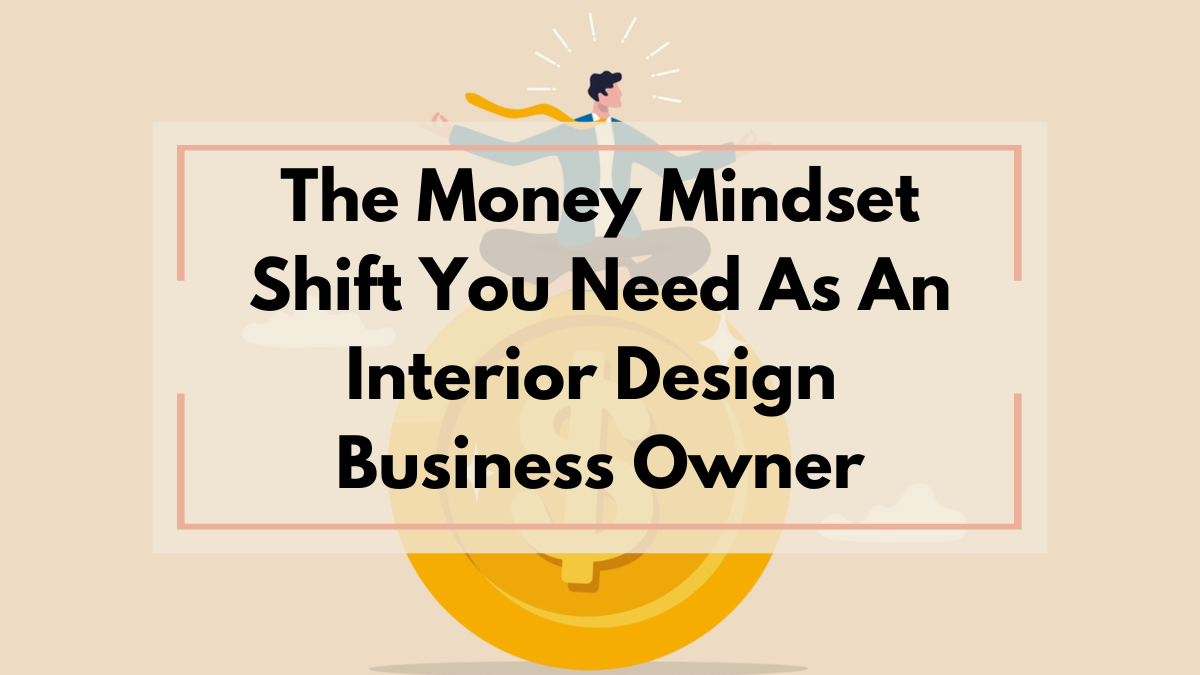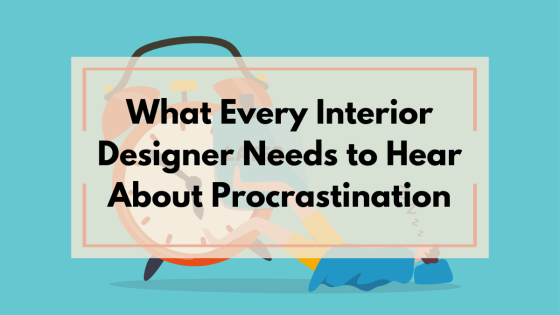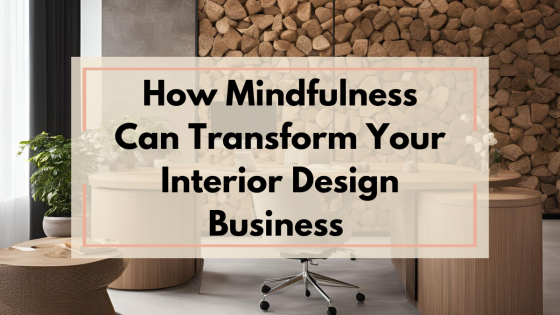The Money Mindset Shift You Need As An Interior Design Business Owner

Money doesn't just talk in your design business. It screams, whispers, and sometimes throws a full-blown tantrum. The truth is, your relationship with money is the secret sauce that determines whether you'll build a thriving design empire or remain stuck in a cycle of financial frustration. Most experienced interior designer business owners have technical skills that could make any space breathtaking, but their bank account tells a different story.
Your mindset is the invisible architect of your financial reality, constructing invisible barriers or building bridges to abundance. A scarcity mindset can limit your growth, keeping you trapped in a cycle of overworking and undercharging. But here’s the good news: You can change your financial reality by changing your mindset. This article will walk you through a transformative approach to financial thinking and abundance, so you can finally take your interior design business to the next level. Ready? Let’s dive in!
Step 1: Identify Your Money Blocks
Before we talk about abundance, let’s uncover what’s stopping you. Many designers unknowingly hold onto limiting beliefs about money, such as:
- "If I raise my prices, I’ll lose clients."
- "I have to work harder to make more money."
- "Money is unpredictable in a creative business."
- "I’m not a ‘numbers’ person, so I avoid my finances."
- "There's not enough high-end work to go around"
These beliefs create subconscious barriers that prevent you from reaching financial success. The first step to a money mindset makeover is recognizing these limiting thoughts and challenging them. Ask yourself: Where did I learn this belief? Is it actually true? More often than not, these beliefs are myths that have been passed down or shaped by past experiences.
Step 2: Reframe Your Relationship with Money
Now that you’ve identified the blocks, it’s time to rewrite your money script. Money is not the enemy. It’s a tool that allows you to build the business and life you desire.
- Audit your current money beliefs by journaling about your earliest memories of money
- Identify which beliefs are helping or hindering your financial growth
- Create intentional counter-statements that challenge negative narratives. For example, instead of thinking, “I need to work harder to make more money,” shift to, “I need to work smarter and charge what I’m worth.”
- Practice these new money mantras daily
One more powerful way to reframe your relationship with money is to treat it like an energy exchange. When clients pay you, they’re not just buying a design, they’re investing in expertise, creativity, and transformation. If you undervalue yourself, they will too. Own your worth!
67e67f1d6a348_lg.png)
Step 3: Price for Profit, Not Just Survival
Many interior designers set their prices based on what they think clients will pay, rather than what their services are truly worth. Instead of using a “hope and guess” method, start using a strategic pricing model:
- Calculate your costs (materials, subcontractors, software, marketing, etc.).
- Factor in your experience and the unique value you bring.
- Develop value-based pricing that reflects transformation, not just hours worked.
- Create tiered service packages that give clients clear options.
- Practice confident price communication without apology.
Remember, premium clients expect premium service. If you price yourself too low, you’ll attract budget-conscious clients who may not respect your expertise. Give yourself permission to be paid well!
Step 4: Adopt an Abundance Mindset
An abundance mindset is the belief that opportunities, wealth, and success are limitless. Here’s how to cultivate it:
- Stop Comparing: Instead of worrying about competitors, focus on your unique strengths.
- Celebrate Financial Wins: Did you book a high-end project? Raise your rates? Acknowledge your progress!
- Invest in Your Growth: Whether it’s hiring a coach, taking a business course, or outsourcing tasks, investing in yourself leads to greater returns.
- Detach from Fear-Based Decisions: If fear is guiding your financial choices, pause. Ask yourself: What would I do if I knew I couldn’t fail?
67e67f492f54a_lg.png)
Step 5: Implement Systems for Financial Confidence
It’s not enough to just change your mindset—you need the right systems in place to maintain financial confidence. Here are some practical steps:
- Track Your Numbers: Regularly review income, expenses, and profit margins.
- Create a Cash Flow Plan: Understand when money is coming in and going out to avoid stress.
- Set Revenue Goals: Break them down into monthly or quarterly targets.
- Establish Clear Payment Terms: Always use contracts and require deposits before starting work.
The more clarity you have around your finances, the more empowered you’ll feel.
67e67f64680d7_lg.png)
Conclusion
Your money mindset is the blueprint for your design business's future. The way you think about money shapes the way you make it. Every belief you hold about money is either constructing or constraining your potential. The most successful designers aren't just talented, they're strategic financial architects who understand that abundance is a skill that can be learned, practiced, and mastered. This journey is about becoming the most empowered version of yourself. If you’ve been operating from a place of scarcity, fear, or undercharging, now is the time to shift into abundance. Your talent deserves to be rewarded, your business deserves to grow, and you deserve financial security.
P.S. Think about one money belief you're committed to changing in the next 30 days?
Thank you for reading ❤️
Categories: : Mindset and Motivation
 Rikaza Shakeer
Rikaza Shakeer 



